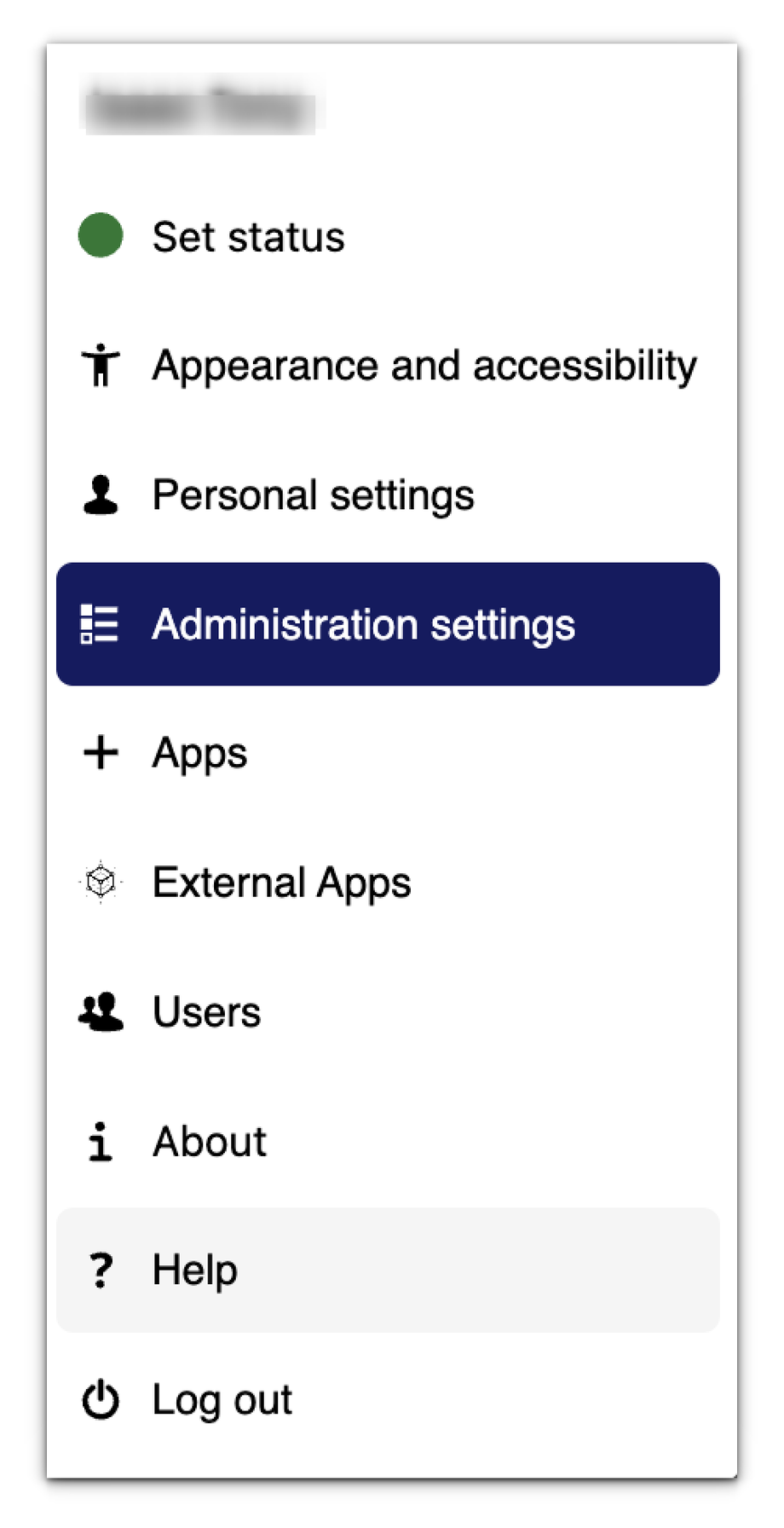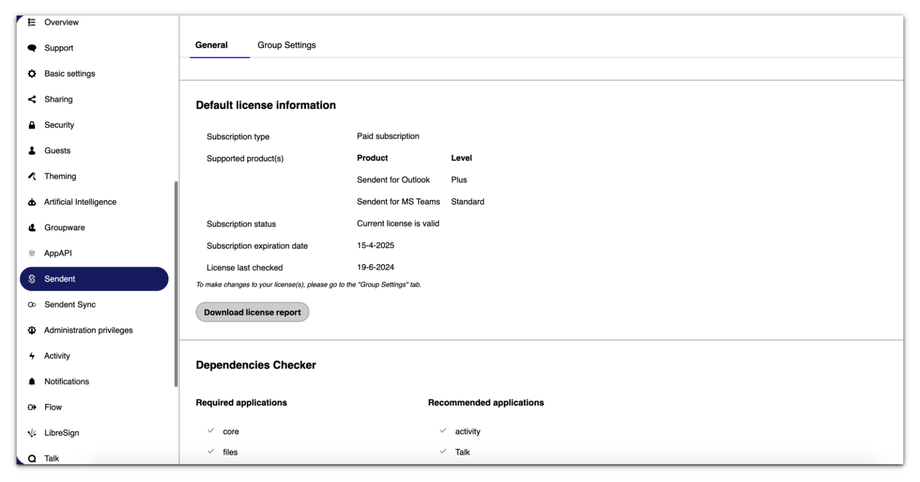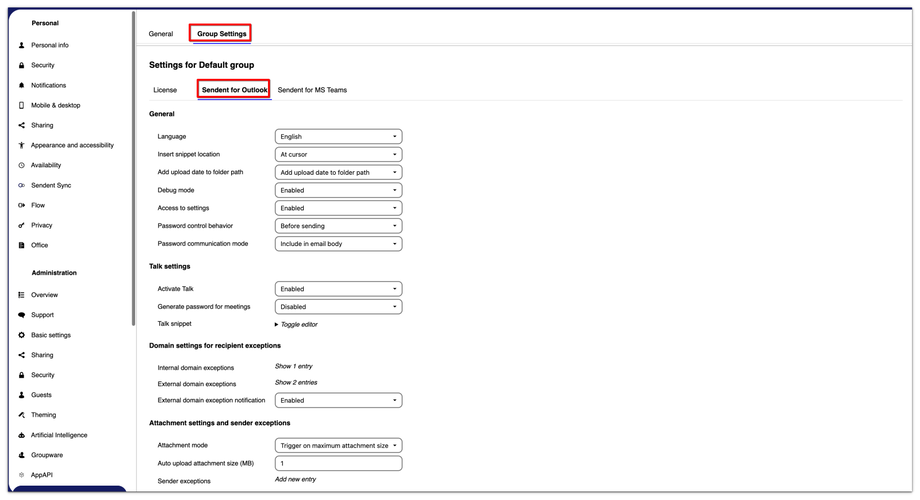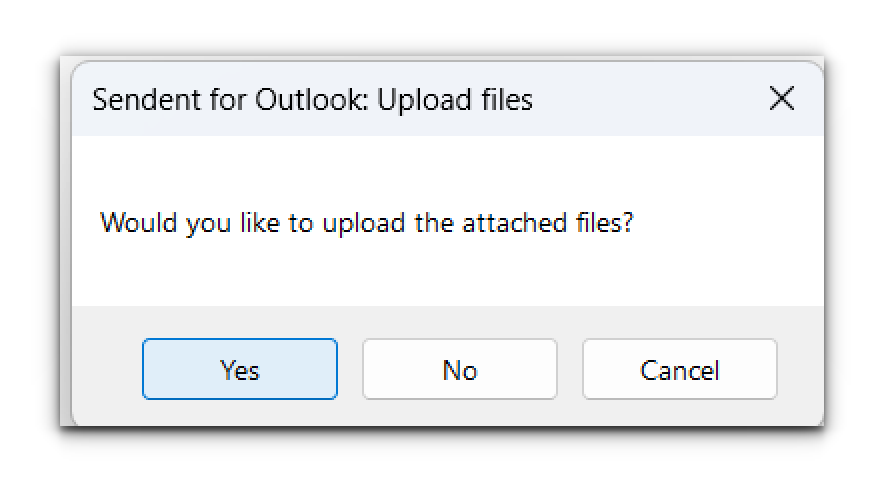How to Manage Attachment Settings, Sender, and Domain Exceptions
Attachment settings allow you to manage how attachments are handled in outgoing emails. If attachment mode is enabled, the Outlook add-in will monitor all outgoing emails. This mechanism allows for two triggers:
Maximum attachment size: When the attachment size exceeds a predefined threshold (expressed in MBs), the add-in will require the user to upload the attachment to their Nextcloud server.
User upload prompt: If an email contains a traditional attachment, the user will receive a prompt to upload it to their Nextcloud server. The upload is optional but not mandatory.
By utilizing these settings, adminstrators can ensure efficient handling of large attachments and encourage users to store files securely on the Nextcloud server, enhancing both the performance and security of your email communications.
To access these settings:
1. Navigate to your Nextcloud settings and open the Theming app.
2. Click on your user avatar or name in the top right corner of the Nextcloud interface and then click on the "Administration Settings" option.
3. From the sidebar menu, click the "Sendent" option.
4. Navigate to the group settings section and switch to Sendent for Outlook option.
5. Navigate to the attachment settings and sender exceptions section.
Attachment settings
The attachment mode settings determine the condition under which the add-in will prompt users to upload attachments to their Nextcloud server, as seen in the image below.
There are three options available:
1. Trigger on Maximum Attachment Size: The add-in monitors the size of attachments in outgoing emails. If an attachment exceeds the predefined size threshold (specified in MB), the add-in prompts the user to upload it to their Nextcloud server.
Set Auto upload attachment size (MB) in combination with 'Trigger on Maximum Attachment Size'.
2. Ask Every Time: The add-in prompts users to upload attachments to their Nextcloud server regardless of the size.
3. None: The add-in does not prompt the user to upload attachments to Nextcloud. Attachments are sent without any intervention.
Sender Exceptions
This field allows you to add specific sender email addresses to an exception list. Users in this list will not be prompted to upload attachments to Nextcloud, regardless of the attachment size or the selected attachment mode. For example, adding "john@gmail.com" means that John will not receive prompts to upload his attachments to Nextcloud when sending emails.
Domain Settings for Recipient Exceptions
The Domain settings exceptions should be used together with the Attachment exception settings above.
The Domain Settings for Recipient Exceptions feature allows administrators to manage file-sharing policies by specifying which internal and external domains should be exempt from receiving files. Additionally, it provides the ability to enable or disable notifications when a user attempts to send a file to a domain listed as an exception.
To access these settings:
Navigate to the domain settings for recipient exceptions section, which is above the attachment settings section.
Internal Domain Exceptions
This setting allows administrators to specify internal domains that should be exempt from receiving files through Nextcloud. Simply click and enter the domain(s) in the "Internal domain exceptions" field.
For example, adding "sendent.com" means recipients from this domain will be exempt from receiving files through Nextcloud and the attachments will be sent instead by regular mail. You can click the trash can icon next to the domain to remove it from the exceptions list.
External Domain Exceptions
This setting allows administrators to specify external domains that should be exempt from receiving files. Click and enter the domain(s) in the "External domain exceptions" field.
For example, adding "gmail.com" means recipients for this domain will be exempt from receiving files through Nextcloud and the attachments will be sent instead by regular mail. Click the trash can icon next to the domain to remove it from the exceptions list.
External Domain Exception Notification.
This option allows administrators to enable or disable notifications when a user tries to send a file to a domain listed as an external exception. The sender will be prompted that they're about to send the files without Sendent for Outlook. Use the dropdown menu next to "External domain exception notification" to select either "Enabled" or "Disabled."










